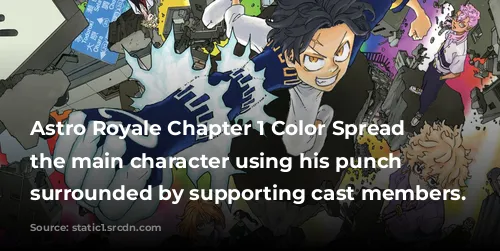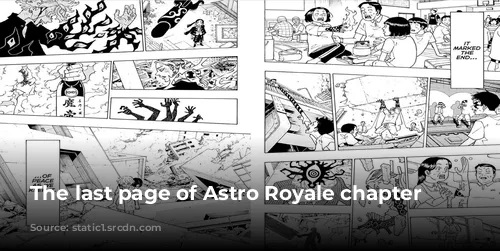In a surprising turn of events, renowned manga artist Ken Wakui, known for the smash hit “Tokyo Revengers,” has parted ways with Kodansha after nearly two decades. He’s now venturing into new territory with “Astro Royale,” a fresh manga debuting in Shueisha’s Weekly Shōnen Jump. This new venture follows the same delinquent themes with a twist: a meteor shower that obliterates Tokyo grants multiple individuals superpowers, leading to a compelling “battle royale” narrative as hinted by the title.

Breaking Free from the Past
The first chapter of “Astro Royale” is a stark departure from “Tokyo Revengers,” which is exciting. This allows “Astro Royale” to stand on its own two feet, avoiding potential shortcomings from its predecessor. It’s also a chance to address some of the criticisms aimed at “Tokyo Revengers,” which the first chapter cleverly begins to do.
While “Astro Royale’s” storyline is still unfolding, both fans and critics of “Tokyo Revengers” have much to anticipate. The new manga already showcases significant differences that could set it apart from its predecessor.

A Protagonist With Backbone: Hibaru
One prominent difference between “Astro Royale” and “Tokyo Revengers” lies in their respective protagonists: Hibaru and Takemichi. Unlike the typical shōnen hero, Takemichi, from “Tokyo Revengers,” wasn’t a strong fighter. He relied on his charisma and emotional honesty to unite others. While this worked for the story, it also attracted criticism, with many pointing out Takemichi’s perceived weakness and lack of assertiveness. This, in part, contributed to the mixed reception of “Tokyo Revengers” in the West.
Fortunately, “Astro Royale’s” Hibaru is a far cry from Takemichi. Though kindhearted, Hibaru is far from passive. He takes initiative and isn’t afraid to get into a fight, demonstrating a level of assertiveness that Takemichi lacked. Hibaru addresses a major criticism leveled at Takemichi’s character, potentially making “Astro Royale” a more compelling read for those who found Takemichi’s passivity frustrating.
Exploring Supernatural Power
Another notable distinction between the two mangas is their handling of supernatural elements. In “Tokyo Revengers,” time travel was exclusive to Takemichi, limiting the scope and leaving the concept underdeveloped, especially in the final arc. In contrast, “Astro Royale” bestows superpowers upon numerous characters, demanding a deeper exploration of the supernatural elements, which are likely to be more comprehensive than in “Tokyo Revengers.”
This deeper development will also contribute to “Astro Royale’s” distinct identity. While the themes of delinquency and superpowers create some overlap with “Tokyo Revengers,” “Astro Royale” delves further into the supernatural realm, setting it apart as a unique type of story. With its strong character writing and unique premise, “Astro Royale” is already carving its own path and promises to stand out in the crowded world of Shonen Jump manga. The future looks bright for Ken Wakui’s new venture, with “Astro Royale” already showing immense potential to captivate readers and leave its mark on the world of manga.

